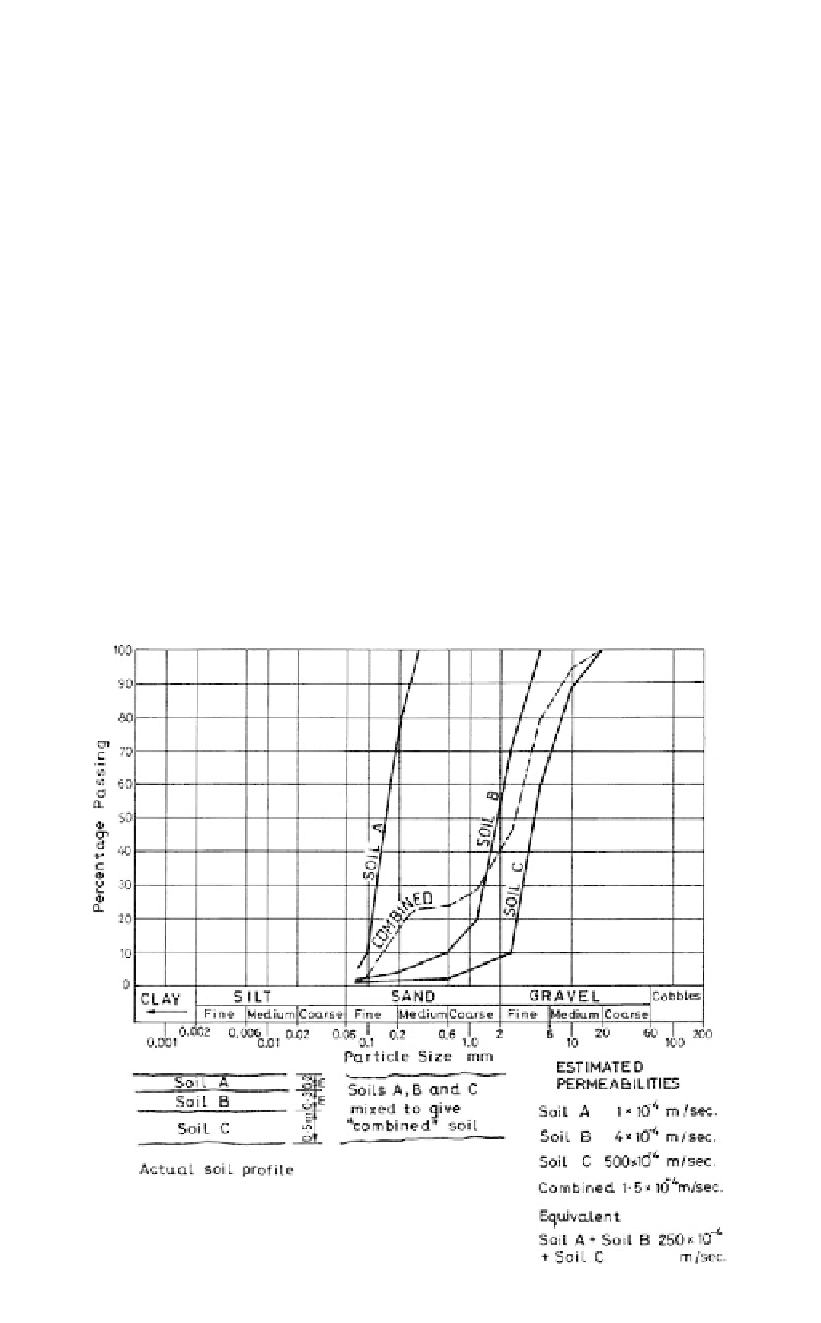Environmental Engineering Reference
In-Depth Information
This equation attempts to account for the effect of particle size, void ratio and par-
ticle shape or permeability.
It is unlikely that the Kozeny-Carman formula is significantly more accurate than the
Hazen formula and its use should be limited to initial estimates of permeability of sand in
non critical projects.
6.3.4
Effects of poor sampling on estimated permeability in the laboratory
Many alluvial soils are stratified in-situ, e.g. a sandy gravel/gravelly sand deposit in a river
bed will, in fact, consist of separate beds of fine sand, coarse sand, and gravel. When sam-
pled in boreholes or test pits, particularly below the water table, there is often a tendency
to mix the strata, in the drilling process and/or in the sampling. If these mixed samples are
used for laboratory permeability tests, or their permeability is inferred from their particle
size distribution, it is likely that the permeability for flow along the strata, i.e. essentially
horizontal permeability, will be significantly underestimated.
Figure 6.56 gives an example where soils A, B and C are present as distinct layers. Their
approximate individual permeability estimated using Hazen's formula are as shown for
horizontal flow. Soil C (gravel) dominates the conditions, and the equivalent horizontal
permeability is of the order of 250
10
4
m/sec.
If in the drilling and sampling process the soils are mixed in proportion to their thick-
nesses, the combined soil particle size distribution would be as shown. For the combined
soil the permeability is controlled by the finer particles, resulting in an estimated perme-
ability of 1.5
10
4
m/sec, or only 0.6% of the actual field horizontal permeability. This
Figure 6.56.
Effect of mixing of soil on estimated permeability.

